No products in the cart.
Why Do Traditional Line Distance Protection Relay Testing Procedures FAIL on Digital Relays?
Traditional line distance relay testing procedures (MTA, Reach, and Timing) are a great way to test electro-mechanical relays and learn how line impedance relays operate; but they are inefficient, ineffective, and frustrating when applied to modern digital relays. This post will show you why your traditional tests are probably failing, and the next post will show you how to perform a dynamic, or system, line distance protection relay testing procedure that will work on any modern relay using any test-set.
If you don’t have a good understanding of line impedance protection, I suggest you stop now and read the “Line Distance (21) Element Testing” Chapter in The Relay Testing Handbook: Principles and Practice, and watch the following video series:
You can also play with the following animation to make sure you truly understand line distance protection.
Can You Predict What Happens Inside a Distance Protection Relay?
What Does a Traditional Line Distance Protection Relay Testing Procedure Look Like?
Let’s look at the traditional methods for line distance protection testing that many relay testers, and automated software, use to test line impedance protection:
Maximum Torque Angle (MTA) Tests
An MTA test starts on one side of a circle characteristic and changes the angle until a pickup is detected. Then a second test starts on the other side of the circle and ramps the phase angle in the other direction. The MTA is assumed to be half-way between the two points.
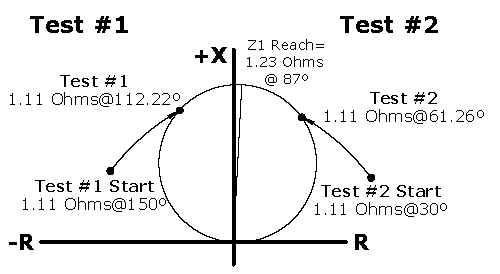
Why would you perform an MTA test?
This is a quick way to tell whether an electromechanical relay (ABB/Westinghouse-KD, or GE GCX) is operating close to the specified characteristic. If the MTA results are good, your multiple-point reach test has a good chance of passing. If the results are bad, you might only test a few key points at first while you wrestle the relay into submission before you run the full battery of tests. This test is really a way to speed up the relay calibration procedure, not to determine a specific number.
Why wouldn’t you perform this test on a digital line distance protection relay?
There’s nothing to calibrate in a digital line impedance distance relay, so this test won’t speed up the digital relay test procedure. It will only slow us down! We’ll be able to tell the Maximum Torque Angle (MTA) using our dynamic tests. Some other reasons not to do this test include:
- There could be hidden blinders as described in the next section that will cause some points to fail, especially if the current lags by more than 90 degrees.
- You can get a false positive on some test-sets if the relay doesn’t operate at all.
- You can get a false positive if another element, like overcurrent, operates instead.
- You can only test the outer circle without changing the relay settings, and only if the test does not trigger another element to operate first.
- You need to change settings to test the inner MHO characteristics, which means you’ll probably do the rest of your tests when the relay is reprogrammed to isolate the element under-test. Now you are testing an unreal condition and will have no way to know whether the output relay is programmed correctly, or whether some other element is incorrectly programmed and will prevent this element from operating.
Reach Tests Across the Entire Line Distance Protection MHO Relay Characteristic
A traditional line distance protective relay reach tries to test the entire MHO characteristic as shown in the following image. This test applies current and voltage at a variety of test angles to make sure the MHO impedance protection is really a circle.
Why would you perform this test?
A really good electromechanical relay tester could look at the test results for this test and know exactly which resistor/inductor/capacitor to adjust, hoping to bring the KD or GCX relay into calibration. Because the relay can naturally fall out of calibration, a good selection of test points are required to make sure the relay will operate correctly throughout the entire range.
Why wouldn’t you perform this test on a digital line distance protection relay?
Digital relays either work, or they don’t. There’s nothing to calibrate, so the big reason for performing multiple tests across an entire range doesn’t exist. Digital relays simply don’t fail this way. In fact, here are some reasons why a complete characteristic test will fail if you try to run it on a modern relay:
Line Impedance Distance Relay Specifications
Manufacturers typically specify that the line impedance protection will only operate within a certain range, such as:
- SEL-311C = “±5% of setting at line angle for 30 ≤ SIR ≤ 60” or “±3% of setting at line angle for SIR < 30”
- GE D-60 = “±5% including the effect of CVT transients up to an SIR of 30.”
- ABB REL670 = “±2.0% static accuracy, Conditions: Voltage range: (0.1-1.1) x Vn, Current range: (0.5-30) x In, Angle: 85 degrees”
- SIEMENS SIPROTEC 7SA522
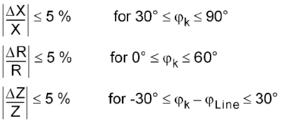
Did you notice all those caveats about the tolerances? Let’s dig a little deeper:
Line Impedance Protection Angle Specifications
The SEL relay is only guaranteed to operate at the line angle (Z1ANG). The ABB relay is only guaranteed to operate at 85 degrees. The SIEMENS relay has a wider range, but there are still limits.
If you run a test outside those values or ranges: What are the expected tolerances? There aren’t any! If you don’t know what is a pass or fail at a given test point, why are you performing the test?
These narrow operating ranges might seem arbitrary, but they exist because digital relays are much smarter than the electromechanical relays they replaced. The circle, or MHO, characteristic exists because of the mechanical limitations of electromechanical relays, and most digital relays just keep up the tradition. A large portion of that characteristic can’t happen during a fault on the power system as described in these blog posts:
If you try to perform a test where the fault current lags the fault voltage by more than 90°, the relay may apply a hidden directional blinder that tells the relay: “That’s not a real fault; don’t trip”. If you try to apply a fault condition where the fault current lags the fault voltage by less than 40°, there may be another blinder that tells the relay: “That’s not a line fault. That looks more like an overload. Don’t trip!”
A modern line distance impedance relay is applied to protect the system from line faults. They are smart enough to know the difference between a relay tester trying to get numbers on their test sheet and a real transmission line fault. Don’t try and force your 20th century relay test plan (square peg) on your 21st century relay (round hole)! They aren’t compatible.
Line distance Impedance Protection Source Impedance Ratios (SIR)
SIR stands for the Source Impedance Ratio. You probably learned about source impedances if you think waaayyyy back to your basic electrical circuit classes. Any given circuit will have a source (100V) that provides a voltage and a load that has some impedance (100Ω), which creates current (1.0A) via Ohm’s Law as shown in the following image:
You should have graduated beyond the simple circuit, and started including wire and source impedance into the circuit as shown in the next drawing:
The measurement across A and C is still 100V and 100Ω, but the source is actually creating 101V with a 1V drop across its internal impedance. What happens if we have a fault and the external resistance drops to 8Ω? Will the voltage across A & C still be 100V? Will the current rise to 10A? Let’s see:
You can see that the source impedance makes a big difference in our circuit. The voltage across A & C is 91.82V, not 100V; even though the source can still produce full voltage. Source impedance makes a big difference to the measured voltage and current in the external circuit. Modern relays can calculate the source impedance and apply it to their calculations. You think you’re testing a simple electromechanical characteristic like this:
But what you’re really testing is a complex digital element that is modelling the real power system and is applying source impedance like this:
The dotted line is the 10 Ohm line impedance relay reach setting, but the relay actually operates on the larger circle that includes source impedance. The only point where the two circles meet is at the Maximum torque Angle. That’s why relay manufacturers only guarantee operation at specific angles. The actual relay MHO characteristic is going to change depending on how the relay calculates the line distance protection source impedance ratio.
Source Impedance Ratio (SIR)
The source impedance ratio compares the measured impedance to the fault with the calculated source impedance to figure out how big the real MHO circle is going to be. Different relays use different algorithms to determine that source impedance ratio (SIR). If you don’t know what SIR you are injecting during your test, keep your tests close to the MTA.
You can see in the image above that Test #1 will always pass, Tests #2 and #3 will likely pass, and Tests #4 and above are probably going to fail. The test is more likely to fail as you move further away from the MTA angle.
You could test the entire range of a line distance protection relay MHO circle characteristic… if you modeled the transmission line, sources, and ground resistivity, but that’s beyond the scope and capabilities of most relay testers. This kind of testing exists, and it’s called end-to-end testing. The design engineer models the system, creates various test points on either sides of the zones using different fault types, someone injects those faults into the relays, and someone evaluates whether the relay responded correctly. THAT’s the kind of testing you should be performing all the time!
Pulsing Line Distance Protection Reach Tests Cause Failures
Step ramps and binary searches are the two most common pulse tests applied to line distance protection relays. Both tests apply a test voltage/current/angle/frequency and wait for a preset time, which is slightly longer than the expected operating time. If the relay operates, the test stops and that value is recorded as the pickup. If the relay does not operate, the test-set changes the voltage/current/angle/frequency and tries again. The pattern repeats until the relay operates, or the test-set gives up.
A stepped ramp starts outside the characteristic (e.g. 7% greater than pick up), and moves close to the characteristic in steps (usually 1%). This type of pulse is more likely to pass because if the relay fails to operate at 100% of pickup for any reason, it is usually primed to operate at the next pulse, which is usually one or two percent less than pickup, which appears as a pass on your test set. However, bigger steps are more likely to fail.
A binary search test changes its parameters based on the test results. If a binary search applies a test at 95% of the reach setting, it knows that the pickup is greater than 95%. The next test could be at 105% to make sure the pickup is in-range before performing the rest of the tests, depending on the search parameters. Binary search tests can give you more accurate results when everything works correctly, but if the relay glitches at any test point, the binary search pattern can get wildly inaccurate results.
Your pulsing tests test can fail for a number of reasons, including:
- Your test doesn’t give the relay enough time to operate as described in the “Overreaching of the Impedance Characteristic Using Automated Testing” Application Note from ABB.
- Your test doesn’t apply pre-fault full-voltages before EACH pulse as described in the same “Overreaching of the Impedance Characteristic Using Automated Testing” Application Note from ABB. Your relay is expecting the voltage and current to change simultaneously… like it does in a real fault.
- Switch-Onto-Fault is operating instead of the zone because the relay isn’t getting the correct breaker status.
- Your test values aren’t including source impedance as described previously in “Overreaching of the Impedance Characteristic Using Automated Testing“.
- Your dynamic test is over-reacting to a momentary relay misoperation.
- Your test pulses don’t include DC Offset as described in “Effect of DC Offset on Instantaneous Element Performance“, from Manta Test Systems. (We describe DC Offset in “What is DC Offset? Ask Chris“)
- You believe the myths described in “A True Understanding of R-X Diagrams and Impedance Relay Characteristics“, from Manta Test Systems.
Your Time Tests Are Too Close to the Pickup Region
The SEL-311C specified that its pickup tolerance was +/-5%, so you should be able to apply a test at 94% of pickup and the relay should operate within its time-delay specifications… right? Not so fast. Here are the operating characteristics during phase-to-phase faults.
There are five more like this and they all start at 90% of pickup. SEL only guarantees operation below 90%, and only if you know what the SIR is. Most manufacturers will have similar caveats. If you apply a test outside of a relay’s specified operating range, why would you expect the relay to operate within your expectations?
Conclusion
Modern line distance impedance relays are highly sophisticated devices with complex operating procedures that become more advanced as time marches on. The 20th century procedures most relay testers apply are becoming more and more outdated with every year. The solution is NOT to dumb-down the relay to get passes on your test sheet. The answer is to make your tests smarter.
Luckily, smarter test plans are easy to create with any modern test set and include the following features:
- Prefault conditions before every test that resets the relay and stops interactions with elements like LOP and SOTF.
- Realistic faults are applied with voltages, currents, and phase angles that look realistic to the relay.
- Strategic test points are applied to make sure the line distance protection relay will:
- Operate at the correct impedance
- Operate in the correct direction
- Operate in the correct amount of time
- Operate the correct outputs
Look for the next line distance relay post that will show you how to create a line impedance relay test plan that is designed to find the failure points in a digital relay.
Did you like this post?
You can share it with these links:
Read More Articles:
Why Does My Open-Delta Connected Phasor Diagram Look Weird?

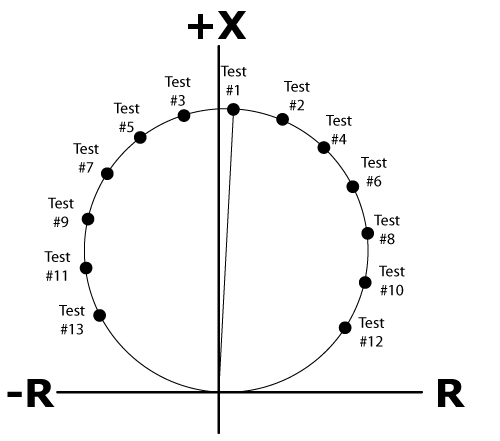
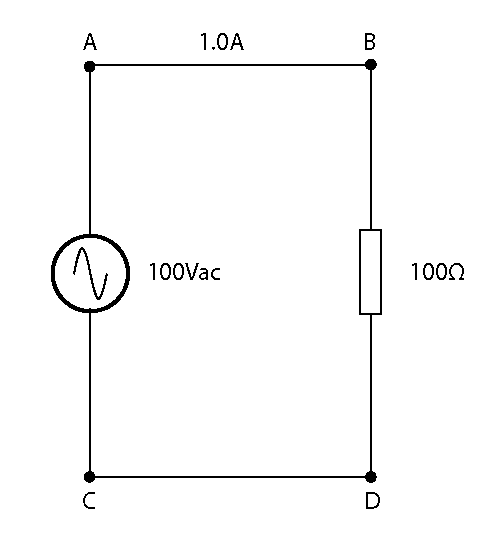


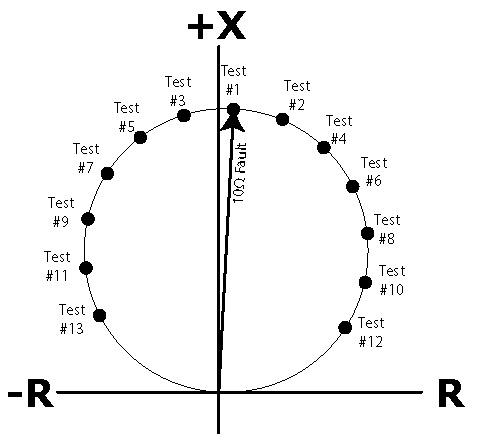
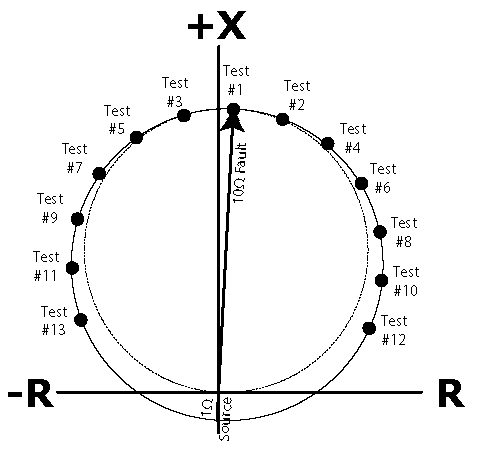
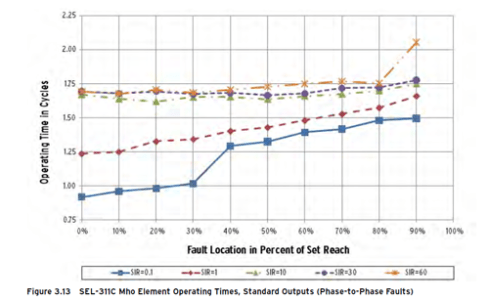
How a directional relay sense polarity mark of current transformer?
They don’t. That’s why meter tests and online meter tests are so important. A relay believes a forward fault happens when the measured fault current lags the voltage by 45 to 89 degrees. A reverse fault is measured when the fault current lags the fault voltage by 225 to 269 degrees. If the CTs, CT wiring, or relay settings reverse the measured current; the relay will be looking in the wrong direction and make the wrong decisions.
I tested SEL 311C and ABB Relays but if test beyond the MTA, I can’t get exact impedance value , what I injecting in secondary kit…so customer asking why it’s coming like that. how I will make them understand ..
Have them read this blog post and then the papers listed in it.